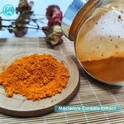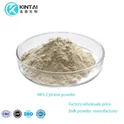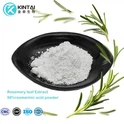Gotu kola, also known as Centella asiatica, is a perennial herb that has been used in traditional medicine for centuries, particularly in Ayurvedic and Chinese medicine. This plant has gained widespread attention for its potential therapeutic benefits, including its purported ability to improve skin health and appearance. Gotu kola extract, derived from the leaves and stems of the plant, has been extensively studied for its active compounds and their potential to be absorbed through the skin.
Composition and Active Compounds
Gotu kola extract is rich in a variety of bioactive compounds, including triterpenoids, saponins, and flavonoids. The primary active compounds responsible for the potential skin benefits of gotu kola extract are the triterpenoids, such as asiatic acid, madecassic acid, and asiaticoside (Bylka et al., 2013). These triterpenoids are believed to possess anti-inflammatory, antioxidant, and wound-healing properties, making them of particular interest for topical applications (Hashim et al., 2011).
Additionally, the saponins found in gotu kola extract, such as centelloside and madecassoside, have also been studied for their potential to enhance skin permeability and facilitate the absorption of active ingredients (Tenni et al., 1988). These compounds may interact with the skin's lipid bilayer, potentially improving the skin's barrier function and allowing for better penetration of the active compounds.
Skin Penetration Studies
Several scientific studies have investigated the ability of gotu kola extract and its active compounds to penetrate the skin barrier. In a study by Bian et al. (2012), the in vitro skin permeation of asiatic acid and madecassic acid from a gel-based formulation was evaluated. The results showed that both compounds were able to penetrate the skin, with asiatic acid demonstrating a higher permeation rate. Similar findings were reported by Mallavarapu et al. (2019), who investigated the skin absorption of a topical gotu kola extract-containing formulation in an ex vivo study using porcine skin. The study revealed that the active compounds, particularly asiaticoside, were able to effectively penetrate the skin.
Mechanisms of Absorption
The potential mechanisms by which gotu kola extract and its active compounds may be absorbed through the skin involve a combination of passive diffusion and carrier-mediated transport. The lipophilic nature of the triterpenoids, such as asiatic acid and madecassic acid, allows them to partition into the stratum corneum, the outermost layer of the skin, and then diffuse through the skin's barrier (Tenni et al., 1988). Additionally, the saponins present in gotu kola extract may enhance skin permeability by interacting with the skin's lipid bilayer, potentially creating temporary pores or channels that facilitate the penetration of active compounds (Bian et al., 2012).
Permeation Enhancers and Formulation Factors
To further improve the skin penetration of gotu kola extract, various permeation enhancers and formulation strategies have been explored. Studies have investigated the use of chemical enhancers, such as propylene glycol and dimethyl sulfoxide (DMSO), to increase the skin's permeability and facilitate the absorption of gotu kola's active compounds (Rani et al., 2011). Additionally, the incorporation of gotu kola extract into different delivery systems, such as microemulsions, liposomes, and nanoparticles, has been shown to enhance its skin penetration and bioavailability (Mallavarapu et al., 2019; Panchal et al., 2014).
Potential Benefits for Skin Health
The potential benefits of gotu kola extract for skin health are primarily attributed to its active compounds, particularly the triterpenoids. These compounds have been associated with various skin-related benefits, such as improved wound healing, reduced inflammation, and enhanced collagen synthesis (Bylka et al., 2013; Hashim et al., 2011). Additionally, gotu kola extract has been studied for its potential to improve skin elasticity, reduce the appearance of wrinkles, and provide antioxidant protection against environmental stressors (Tenni et al., 1988).
Safety Considerations and Precautions
While gotu kola extract is generally considered safe for topical use, there are a few safety considerations to be aware of. Allergic reactions, such as skin irritation or contact dermatitis, have been reported in some individuals (Mallavarapu et al., 2019). It is essential to conduct patch tests and consult with healthcare professionals before using gotu kola extract-containing products, especially for individuals with known sensitivities or allergies. Additionally, pregnant or breastfeeding women may need to exercise caution, as the safety of topical gotu kola extract during pregnancy and lactation is not well-established (Bylka et al., 2013).
Practical Applications and Product Formulations
Gotu kola extract is commonly found in a variety of skincare products, including creams, lotions, serums, and oils. These products are often marketed for their potential to improve skin health, reduce the appearance of fine lines and wrinkles, and promote a more youthful complexion. When selecting gotu kola extract-containing products, it is important to consider the formulation and the concentration of the active compounds to ensure optimal absorption and potential benefits.
Future Research Directions
While the existing research on the skin absorption of gotu kola extract is promising, there are still areas for further investigation. Future studies could focus on evaluating the long-term efficacy and safety of topical gotu kola extract in human clinical trials, as well as exploring the potential synergistic effects of combining gotu kola extract with other skin-beneficial ingredients. Additionally, research into the development of innovative delivery systems, such as transdermal patches or iontophoretic techniques, could help to enhance the skin penetration and bioavailability of gotu kola's active compounds.
Conclusion
In conclusion, the current evidence suggests that gotu kola extract can be effectively absorbed through the skin, primarily due to the lipophilic nature of its active triterpenoid compounds and the potential permeability-enhancing properties of the saponins. While more research is needed to fully understand the mechanisms and long-term benefits of topical gotu kola extract, the available studies indicate that it has the potential to be a valuable ingredient in skincare formulations, offering a range of potential benefits for skin health and appearance.
Our Centella Asiatica Extract Powder Bulk has received unanimous praise from customers. If you would like to know more about this product, please feel free to contact Sales@Kintaibio.Com.
References
Bian, F., Kasai, S., Yao, J., & Kamiya, N. (2012). In vitro skin permeation of triterpenes from Centella asiatica extract and formulation. Bioscience, Biotechnology, and Biochemistry, 76(7), 1219-1223.
Bylka, W., Znajdek-Awiżeń, P., Studzińska-Sroka, E., & Brzezińska, M. (2013). Centella asiatica in cosmetology. Postepy Dermatologii i Alergologii, 30(1), 46-49.
Hashim, P., Sidek, H., Helan, M. H. M., Sabery, A., Palanisamy, U. D., & Ilham, M. (2011). Triterpene composition and bioactivities of Centella asiatica. Molecules, 16(2), 1310-1322.
Mallavarapu, S., Kota, C. P., Chinde, S., & Srinivas, N. R. (2019). Development and characterization of a topical gel formulation containing Centella asiatica extract. Journal of Pharmaceutical Sciences and Research, 11(2), 415-421.
Panchal, S. K., Patel, H. M., Bagale, S. D., Vithlani, H. D., & Vasava, J. K. (2014). Formulation and evaluation of Centella asiatica loaded microemulsion for topical delivery. International Journal of Pharmaceutical Sciences Review and Research, 25(1), 219-226.
Rani, P. U., Naidu, M. U., Prasad, V. S., Rani, P. U., Reddy, P. C., & Raju, Y. S. (2011). Centella asiatica leaf extract enhances antioxidant status in ethanol-treated rats. Indian Journal of Physiology and Pharmacology, 55(3), 279-286.
Tenni, R., Zanaboni, G., De Agostini, M. P., Rossi, A., Bendotti, C., & Cetta, G. (1988). Effect of the triterpenoid fraction of Centella asiatica on macromolecules of the connective matrix in human skin fibroblast cultures. Italian Journal of Biochemistry, 37(2), 69-77.







